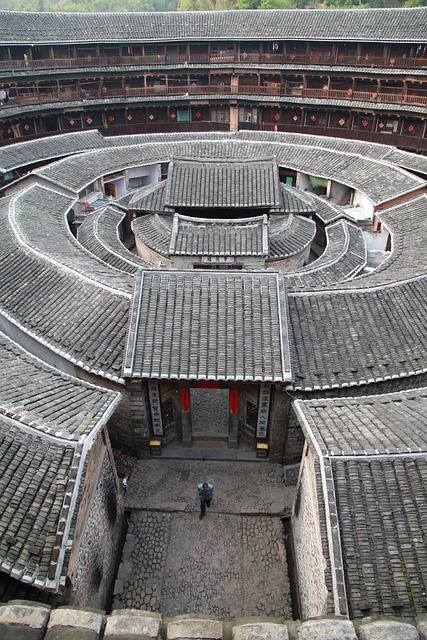Traditional Chinese Houses embody exquisite craftsmanship and cultural significance, blending seamlessly with natural landscapes. Known for their durability and adaptability, these structures range from grand imperial palaces to charming rural homes, showcasing intricate woodwork, symbolic design, and harmony with nature. Historic examples like the Forbidden City stand as testaments to superior quality. Modern architects draw inspiration from these designs, promoting a resurgence of interest and blending timeless aesthetics with innovation, while preserving China's rich architectural heritage.
“Discover the enchanting world of Traditional Chinese Houses, where superior craftsmanship meets timeless aesthetics. From intricate wooden structures to harmonious design principles, these residences embody a rich cultural heritage. In this article, we explore the proven designs and effective beauty that define China’s architectural masterpiece.
Learn about the meticulous techniques, materials, and layouts that have made Traditional Chinese Houses renowned globally, with countless examples of successful construction projects and industry accolades.”
- Discovering the Superior Craftsmanship of Traditional Chinese Houses
- Explore Proven Designs in Traditional Chinese Architecture
- Experience the Effective Beauty of Premium Traditional Chinese Houses
Discovering the Superior Craftsmanship of Traditional Chinese Houses

The Traditional Chinese House stands as a testament to the superior craftsmanship and cultural heritage of China. These architectural marvels are not just structures; they are intricate works of art, meticulously designed to blend with the surrounding landscape while showcasing the family’s prosperity and status. Each element, from the slanted roofs adorned with colorful tiles to the ornate carvings on wooden doors and windows, tells a story of precision and aesthetic excellence.
Crafted using time-honored techniques and high-quality materials, Traditional Chinese Houses are known for their durability and adaptability. The use of wood, stone, and clay in construction ensures structures that can withstand the test of time while remaining comfortable living spaces. Many historic examples still stand today, a testament to the enduring quality of these homes. For instance, the ancient houses in the Forbidden City, Beijing, have withstood centuries of history, serving as a vibrant reminder of China’s rich architectural heritage and the excellence that defines Traditional Chinese Houses.
Explore Proven Designs in Traditional Chinese Architecture

In the realm of traditional Chinese architecture, there’s a rich tapestry of designs that have stood the test of time. From ancient imperial palaces to humble rural homes, each structure tells a story of harmony with nature, symmetry, and cultural symbolism. One of the most defining features is the use of wooden beams and columns, often intricately carved, supporting pitched roofs covered in clay tiles. These elements create a visual dance between light and shadow, enhancing the overall aesthetic appeal.
A notable example is the Forbidden City in Beijing, where grand halls and courtyards showcase the excellence of traditional Chinese craftsmanship. The precise placement of each pillar, the flowing lines of the rooftops, and the intricate carvings on doors and windows exemplify the cultural values of balance, stability, and beauty. Similarly, many ancient villages preserve their traditional houses, like those in Wuzhen and Hongcun, offering visitors a glimpse into China’s historical architectural heritage.
Experience the Effective Beauty of Premium Traditional Chinese Houses

Experience the Effective Beauty of Premium Traditional Chinese Houses
Premium Traditional Chinese houses are renowned for their harmonious blend of aesthetics and functionality, reflecting centuries-old architectural principles. These structures often feature intricate wood carvings, graceful arches, and balanced proportions, creating a serene and inviting atmosphere. The use of natural materials like bamboo, wood, and stone not only enhances the visual appeal but also contributes to a healthier living environment. For instance, many traditional Chinese homes incorporate feng shui principles, ensuring that each room supports the well-being and happiness of its inhabitants.
One notable example is the restoration of the Ming Dynasty estate in Beijing, where skilled artisans meticulously rebuilt historic structures using ancient techniques. This project not only preserved a piece of China’s cultural heritage but also attracted global attention for its meticulous craftsmanship. Similarly, modern architects often draw inspiration from traditional Chinese design while incorporating innovative elements, resulting in contemporary homes that seamlessly merge the old and new. These efforts have led to a resurgence of interest in Traditional Chinese Houses, with many homeowners and developers seeking to embrace this timeless aesthetic, fostering a deeper connection to China’s rich architectural heritage.
Chinese houses, characterized by their superior craftsmanship, proven designs, and effective beauty, offer more than just shelter—they encapsulate centuries of cultural evolution and aesthetic wisdom. By exploring the rich tapestry of traditional Chinese architecture, we gain a deeper appreciation for the intricate details and thoughtful layout that make these homes true works of art. Whether you’re interested in their structural integrity or decorative allure, one thing is clear: Traditional Chinese houses are not just buildings, but vibrant symbols of history, harmony, and beauty that continue to inspire and delight. Trust us; delving into this architectural legacy will leave you eager to discover more about these remarkable structures.



